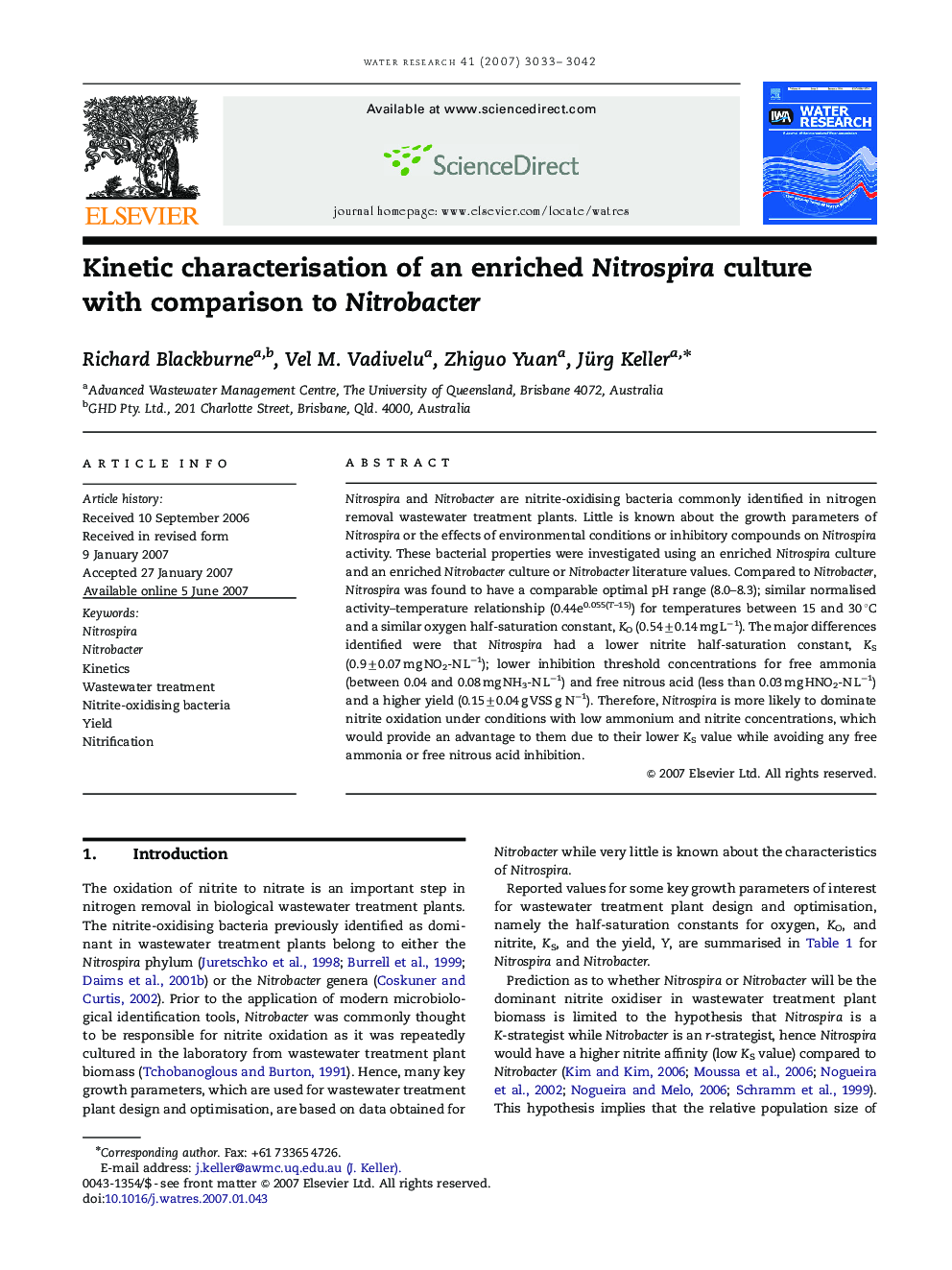| Article ID | Journal | Published Year | Pages | File Type |
|---|---|---|---|---|
| 4483898 | Water Research | 2007 | 10 Pages |
Nitrospira and Nitrobacter are nitrite-oxidising bacteria commonly identified in nitrogen removal wastewater treatment plants. Little is known about the growth parameters of Nitrospira or the effects of environmental conditions or inhibitory compounds on Nitrospira activity. These bacterial properties were investigated using an enriched Nitrospira culture and an enriched Nitrobacter culture or Nitrobacter literature values. Compared to Nitrobacter, Nitrospira was found to have a comparable optimal pH range (8.0–8.3); similar normalised activity–temperature relationship (0.44e0.055(T–15)) for temperatures between 15 and 30 °C and a similar oxygen half-saturation constant, KO (0.54±0.14 mg L−1). The major differences identified were that Nitrospira had a lower nitrite half-saturation constant, KS (0.9±0.07 mg NO2-N L−1); lower inhibition threshold concentrations for free ammonia (between 0.04 and 0.08 mg NH3-N L−1) and free nitrous acid (less than 0.03 mg HNO2-N L−1) and a higher yield (0.15±0.04 g VSS g N−1). Therefore, Nitrospira is more likely to dominate nitrite oxidation under conditions with low ammonium and nitrite concentrations, which would provide an advantage to them due to their lower KS value while avoiding any free ammonia or free nitrous acid inhibition.
